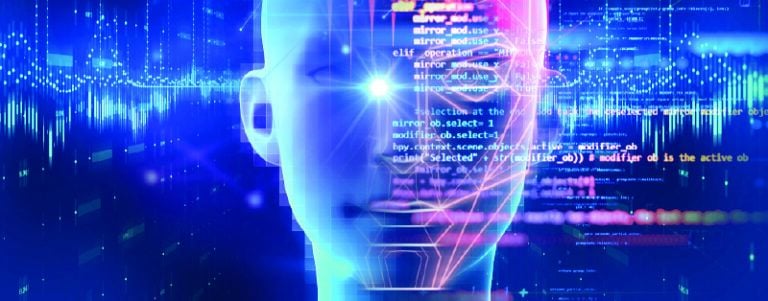Beginner’s Guide to Data Science: Learn How to Use Data to Make Informed Decisions

- What is Data Science, and Why is it Important?
- What are Key Data Science Techniques?
- Some Important Data Science Tools
- What are the Steps in a Data Science Project?
- What are the Different Types of Data?
- What is the Role of Machine Learning and Artificial Intelligence in Data Science?
- Learn Data Science with Emeritus
There used to be a time when computers would take forever to complete a simple calculation. However, thanks to data science and Artificial Intelligence (AI), calculating large data sets is possible within seconds today. Data science and artificial intelligence are the disciplines that analyze large data sets and make insightful findings. They are a relatively new field that helps businesses make sense of data. It is easy to see, however, that the demand for data scientists and analysts is rapidly increasing. In fact, a 2022 report revealed that data science is the fastest-growing business segment worldwide, with a projected growth rate of 650%. The reason for this is easy to understand: the scope of data science is increasing because more industries recognize the value of data-driven decision-making.
What is Data Science, and Why is it Important?
Data science refers to the process of collecting, analyzing, and interpreting data to derive deep insights. It is used in almost every industry today to predict customer needs, make complex business decisions, and automate processes among many other functions. For instance, data science is used in businesses to optimize marketing campaigns; in healthcare, it is used to identify trends in patient data and develop personalized treatment plans; while in finance, data science can help detect business risk.
Here are some reasons why data science is important:
- Enhances decision-making by analyzing large data sets and communicating the findings to key stakeholders. This enables companies to gain valuable insights and make informed decisions based on data.
- Improves efficiency by streamlining processes and automating tasks.
- Introduces innovation by leveraging data insights to make discoveries, develop new technologies, and solve complex business problems.
- Enhances customer satisfaction and loyalty by uncovering deep customer insights.
Also Read: Top 10 Data Science Interview Questions with Answers
What are Key Data Science Techniques?
Data science uses different techniques like pattern recognition, decision trees, supervised learning, Bayesian statistics, and deep learning to identify patterns and correlations in a data set. In addition to that, they use various techniques to collect, analyze, clean, visualize, and interpret data. Here are some popular data science techniques.
1. Deep Learning
Deep learning is a machine learning model that imitates the way humans make decisions. They consist of deep machine learning algorithms that are present at multiple layers and are used for data processing. Data scientists use deep learning for collecting, analyzing, and interpreting large sets of data quickly and with minimum error.
2. Data Mining
Data mining is the process of storing large data sets to identify patterns and relationships between them. In short, it’s the process of converting raw data into a structured format.
3. Neural Networks
Neural networks are algorithms that recognize underlying relationships in data sets. They are also known as Artificial Neural Networks (ANNs) or Simulated Neural Networks (SNNs). Furthermore, they are designed to mimic the functionality of the human brain. They have connected nodes that work and resemble the original neurons of the human brain. These nodes receive, process, and send data.
4. Regression Analysis
Regression analysis evaluates the relationship between a dependent variable and one or more independent variables to make predictions. There are different types of regression analysis, such as linear regression, multiple regression, logistic regression, and polynomial regression.
Depending on the nature of the data and the research problem, one can use a specific type of regression analysis.
5. Clustering
Clustering is a statistical technique that groups data points based on their features or variables. In simple words, clustering is the process of grouping data points with similar features or variables to identify patterns and relationships and draw meaningful insights.
6. Visualization
Data visualization refers to the representation of data in a graphical format. It enhances the appearance of the data, making it easier for laypeople to understand.
7. Predictive Modeling
Predictive modeling is the process of using various mathematical and computational methods to develop predictive models. These models examine historical data and analyze patterns and relationships between data points.
Some Important Data Science Tools
Tools are equipment used to derive meaningful insights from large data sets. Generally, data scientists use a variety of tools in their day-to-day work. However, here are a few popular ones.
1# Python
Data scientists generally use Python for big data and analytics because of its unique characteristics:
- Easy to learn
- Open source
- Integrates well with other languages
Additionally, Python has extensive libraries like NumPy, Pandas, and Scikit-learn. Data scientists can use them for data analysis, manipulation, and visualization.
2# Structured Query Language (SQL)
Structured Query Language (SQL) is a powerful tool for data scientists that helps manage and query relational databases. Furthermore, data scientists use SQL to extract data from different databases. Since many databases are modeled after SQL, it becomes easy for data scientists to extract data from different databases.
3# Tableau
Tableau is a data visualization tool that scientists use to create dynamic and interactive graphs and charts. This tool is immensely popular among data scientists because it helps them break large data sets into small, understandable parts. As a result, anyone can understand the eventual data science findings.
4# TensorFlow
TensorFlow is an open-source machine learning and artificial intelligence framework widely used in image and speech recognition, Natural Language Processing (NLP), and predictive modeling.
What are the Steps in a Data Science Project?
A data science project may involve several steps, which vary depending on the project’s goals and requirements. Generally, these are some of the steps of a data science project:
Step 1: Define the Problem
The first step is to identify the problem and address the needs. This will help companies build an effective model that positively impacts the organization.
Step 2: Collect and Clean Data
The next step is collecting data corresponding to the problem. Companies can collect data from internal and external sources and filter everything that is duplicate, null, and corrupt. After cleaning the data, data scientists organize data in a structured manner and prepare for analysis.
Step 3: Explore the Data or Exploratory Data Analysis (EDA)
In this step, the data scientist analyzes the data collected in the previous step to draw valuable insights. Scientists use these deep insights to make a predictive model.
Step 4: Model Building
The next step is to conduct data modeling. This is where data scientists use machine learning and statistical algorithms to derive high-value insights and predictions.
Step 5: Communicate the Findings
These insights and conclusions drawn from predictive modeling are communicated to stakeholders via charts, graphs, or pie charts.
Also Read: Why Data Cleaning is a Significant Step for Accurate Data Analysis?
What are the Different Types of Data?
Data scientists use different data for different projects. However, sometimes data scientists can work with multiple types of data to derive conclusions. Here are some popular varieties that data scientists often use.
1. Numerical Data: It refers to data expressed in numerical values. They are either continuous (eg weight) or discrete (eg number of children). Scientists often use numerical data in statistical analysis and predictive modeling.
2. Categorical Data: Categorical data refers to data divided into categories or groups. They are either nominal (eg colors) or ordinal (eg education level) and are used in data visualization and classification models.
3. Text Data: Text data refers to data present in documents, emails, social media posts, and web pages. Scientists use NLP techniques to analyze text data.
4. Time Series Data: Time series data refers to data collected at regular intervals over a certain period. It is used to track trends and patterns.
5. Spatial Data: Spatial data refers to data that is associated with space or physical location. Scientists can use it for mapping and geographical analysis.
What is the Role of Machine Learning and Artificial Intelligence in Data Science?
Machine Learning (ML) and Artificial Intelligence (AI) play crucial roles in data science. They provide the tools required for data analysis and interpretation. Furthermore, ML algorithms analyze data patterns and correlations and extract insights from them. Meanwhile, AI can automate processes. Therefore, it’s clear to see that machine learning and artificial intelligence are valuable tools for data scientists, enabling them to gain insights from complex data and develop innovative solutions to real-world problems.
Also Read: What is the Future of Data Science & AI?
Learn Data Science with Emeritus
If you want to develop a career in data science, then you should take up Emeritus’ data science courses. Designed for fresh graduates and experienced professionals, they will equip learners with the advanced skills and knowledge required to progress in their careers.







